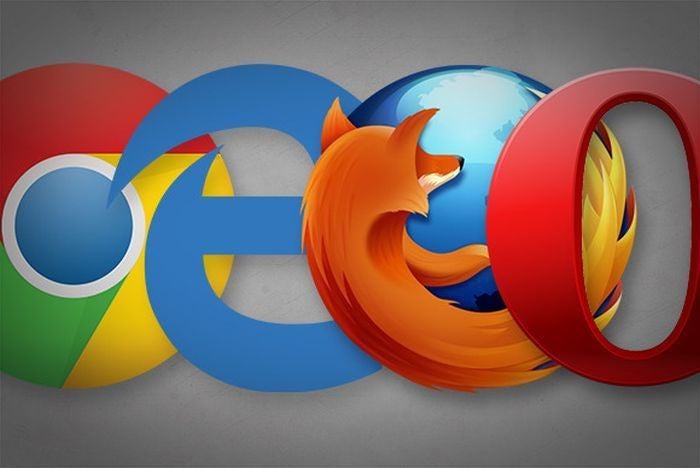Top web browsers 2017: Look on the bright side, Microsoft
In July, IE and Edge still lost market share, just not as badly as before. Google Chrome, meanwhile, ticked up.

Microsoft has to take solace from any source it can as its share of the browser market continues to dribble down the drain.
To wit: Even as Microsoft's browser share again declined during July, at least it was a smaller contraction than of late, perhaps giving those in Redmond hope that the worst is behind them and at some point the downward lines on their charts will flatten.
According to data from U.S. analytics vendor Net Applications, the user share of Internet Explorer (IE) and Edge -- an estimate of the proportion of the world's personal computer owners that ran those browsers -- dipped by three-tenths of a percentage point, ending at a combined 22.2%. July's loss was the smallest since March, and the second smallest since December 2014.
At times, browser share data is too fickle for illustrating short-range trends, so the five-month slow-down in IE+Edge declines could be an artifact of the metrics company's methodology. Or it may be the strongest signal yet that Microsoft's browsers may have a share basement beyond which they won't sink.
Exhibit A for the latter: For the first seven months of this year, IE+Edge lost four percentage points, representing a 15% reduction from their Jan. 1 state. Compare that to 2016, when in the same length of time, IE+Edge bled nearly 14 percentage points, equal to a decline of 29%, or more than twice as much as 2017.
Microsoft must get its victories, or even less-drastic defeats, where it can.
Not surprisingly, the slowing of Microsoft's browser share deterioration was tempered by a continuation of a troubling trend for Edge, the default in Windows 10. Last month, just 20% of all Windows 10 users ran Edge as their primary browser, down from 24% a year earlier. Edge's one-in-five share of Windows 10 is the browser's lowest ever showing.
Because the share skirmish is zero-sum, Microsoft's losses translated into rival browser makers' gains. When the former slides less, competitors' growth does as well. Most affected was Google's Chrome, which has been the biggest beneficiary of IE+Edge's nosedive.
Chrome remained virtually flat last month, increasing its share by just one-tenth of a percentage point to post 59.8% for July. Since the start of the year, Chrome has climbed by three points, representing a 6% growth rate. In the first seven months of 2016, Chrome added nearly 19 points to its share, equal to a hike of 58%.
Mozilla's Firefox was the winner for July, putting another three-tenths of a percentage point on its share to reach 12.3%, the browser's highest number in almost three years. Although Firefox currently controls less than half the share it did at its late 2009-early 2010 peak, its recovery from a near-death experience a year ago has been remarkable. In August 2016, Firefox slumped to 7.7% and seemed in danger of vanishing altogether.
Net Applications estimates user share by sniffing the browser agent strings of those who visit its clients' websites, then tallying the various browsers and operating systems. It also weights each country's data by the size of its online population to account for areas, such as China, where it lacks large numbers of analytics customers.

Comments
Post a Comment